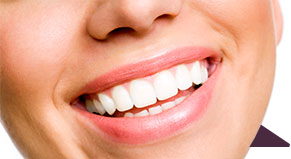White Discoloration On Teeth: What It Means & How to Fix
February 18th, 2016
 Everyone hates teeth discoloration, which is why whitening strips are so popular. But what do you do when the discoloration appears in the form of white spots on your teeth? Although these spots are primarily a cosmetic concern, they can affect oral health and should be treated.
Everyone hates teeth discoloration, which is why whitening strips are so popular. But what do you do when the discoloration appears in the form of white spots on your teeth? Although these spots are primarily a cosmetic concern, they can affect oral health and should be treated.
Causes
White discoloration on teeth, more common yet less discussed, are due to the demineralization and loss of enamel on the tooth. Common causes of demineralization include poor brushing habits and poor diet choices. White spots (or hypoplasia) can form in children if there is disruption in enamel formation, or if you use too much fluoride toothpaste.
When these unsightly white spots appear in adults, they are often the sign of tooth decay and plaque formation. When plaque builds up, bacteria forms that leads to demineralization, the first step in tooth decay. This can be common when braces are taken off, as plaque often builds in hard-to-reach places underneath braces (white spots are often more common in orthodontic patients).
Preventing White Discoloration
While treatments for these white spots are available (we’ll discuss these later), prevention is also possible. Here are a few easy steps you can take to prevent white spots from appearing on your teeth!
- Brushing well! Nothing prevents demineralization and plaque buildup better than brushing thoroughly two times a day.
- Flossing every night. Flossing can also help drastically reduce plaque buildup and therefore reduce those unappealing white spots!
- Less soda, more water. Soda causes acidic buildup, which demineralizes your teeth faster. Drink more water to help prevent this.
- Eat healthy, snack less. Choosing foods that contain less sugar (and therefore less demineralizing bacteria) that break down calcium in the teeth will help prevent decalcification and the formation of white spots. Consider mineral and calcium rich foods, such as milk and cheese. Also, try to eat foods high in magnesium, as this mineral helps your body absorb and retain calcium.
Treating White Spots
Especially in orthodontic cases, white spots that form may need to be treated, despite preventive measures that were taken. Here are some of the best treatments for white spots on your teeth.
 Bleaching your teeth. Dentists can professionally assess the damage and bleach your teeth to make these spots less visible, as well as seal enamel in order to strengthen your teeth again. At Water Tower Dental Care, we use Zoom! Teeth Whitening to bleach teeth in under an hour!
Bleaching your teeth. Dentists can professionally assess the damage and bleach your teeth to make these spots less visible, as well as seal enamel in order to strengthen your teeth again. At Water Tower Dental Care, we use Zoom! Teeth Whitening to bleach teeth in under an hour!- Composite bonding. In this procedure, resin is molded onto your teeth, helping to conceal white spots and giving you a straighter, whiter smile.
- Air or microabrasion. Consider techniques in which your dentist can remove spots by scuffing the area with abrasive material. These techniques should only be used for small to medium white spots, as too much abrasion can further damage your teeth.
- Topical Remineralization Therapy. These prescription toothpaste and gel treatments help remineralize your teeth faster by treating the microscopic holes causing the white spots. The photo above and to the right shows a patient of ours before and after enamel remineralization therapy.
In all, white spots are undesirable to most. While prevention is ideal, treatment is often necessary. Luckily, Water Tower Dental Care can help with this white discoloration treatment to get your teeth sparkling white again!






 Website Powered by Sesame 24-7™
Website Powered by Sesame 24-7™